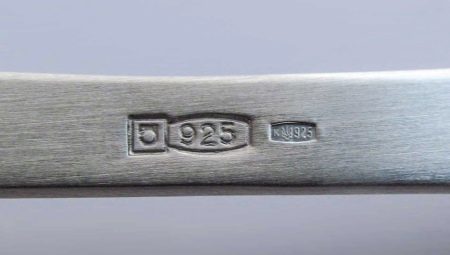The popularity of silver products in society is due to their visual and technical characteristics. There are samples on silver, as well as on other precious metals. They may differ on products manufactured in the Russian Federation and in other countries. Samples vary depending on the composition of the alloy and the intended use of the product.

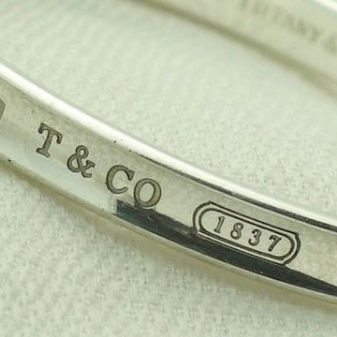
What are they for?
To control the amount of impurities and customer confidence in the quality of the goods, so-called samples appeared. They determine the ratio of silver to impurities in the alloy. On silver products, the sample is stamped in the form of a stamp. Its location may be different. A small mark is easy to find on things. If it cannot be detected, there is a chance that the sample was jammed or it was not there initially.
The easiest way to determine the authenticity of a silver product is to contact specialists at a jewelry store or pawnshop. You can contact and State Assay Supervision Inspectoratewhere they will conduct a qualified assay. Based on the results of the request, an assessment of the quality of the silver goods will be made.
If you want to verify the authenticity of a silver product, you can by yourself. For this, no special devices are needed. Although an exact test is so unrealistic to determine.
Silver is a metal with high thermal conductivity. So, if you immerse the thing in boiling water and immediately remove it, the silver will heat up to the temperature of the water.
It is also possible to verify authenticity with a magnet, since silver marked with a high standard is not attracted.
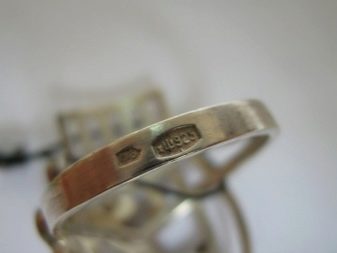
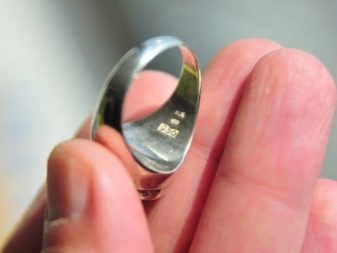
Another way to check is iodine. Just drop on the product and look at the reaction of the metal. On real silver, a dark spot should remain.In addition, darkening on high-quality metal leaves contact with chalk. A fake can manifest itself over time. A high-quality product will not oxidize; plaque and corrosion will not appear on it. With all these manifestations, it becomes clear that many third-party additives are mixed into the product.
Conventionally, all silver products are divided into groups according to quality level. Silver without impurities is too flexible and it is not technically possible to make dishes from it or use it for jewelry. In order to keep the product in shape, ligatures are mixed into precious metal. As impurities, various elements are used. For this reason, in order to determine the "purity" and the direct content of the metal (in this case silver), the term "sample" is adopted.
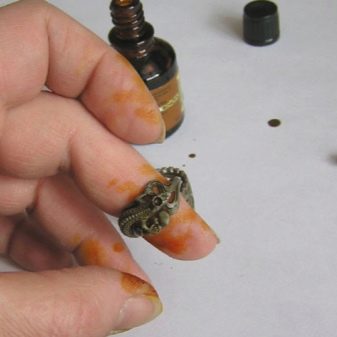
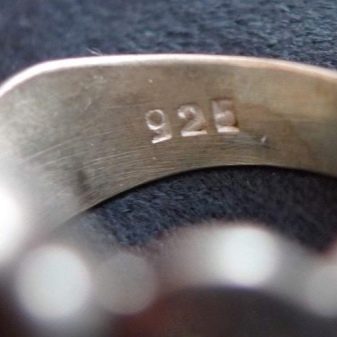
Simply put, the sample will know how much pure metal is contained in a particular alloy. For example, in sample 800, 800 g of silver and 200 g of other inclusions fall per 1 kg of material. Traditionally, copper is used as an impurity, but the more such metal in the alloy, the sooner the silver product will darken or turn yellow.
Nickel impurities are found - a nickel content of up to 1% allows to improve the alloy in terms of mechanical properties. Precious jewelry in microscopic lobes contains lead, iron, antimony and bismuth. Zinc and cadmium are also allowed - these compounds are used in the manufacture of silver solders.
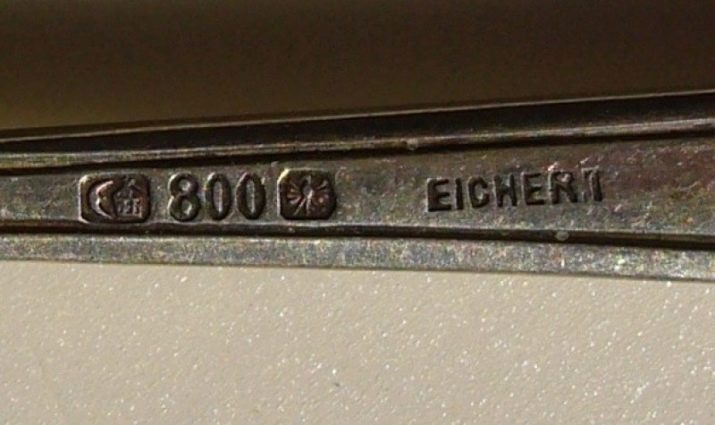
Which are there?
Silver samples are ranked based on the percentage of pure substance in the alloy - from 600 to 999. Silver in its pure form has a soft silver tint, does not darken for a long time, is easy to clean, but there are conditions that affect the appearance of the metal. It depends on the sample or on the volume of impurities included in the alloy.
Buyers are often worried about the question - what sample can silver have? The testing of Russian silver products is carried out in accordance with accepted international standards. Often copper is added to the alloy, interacting well with silver. Subject to the addition of cadmium, the manufactured thing rises significantly in price. Nickel, zinc and aluminum can also be mixed with silver, but copper in the alloy is a classic.
The greater the number of ligatures in silver, the more distinct its shade.
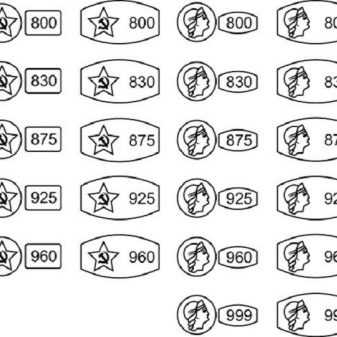
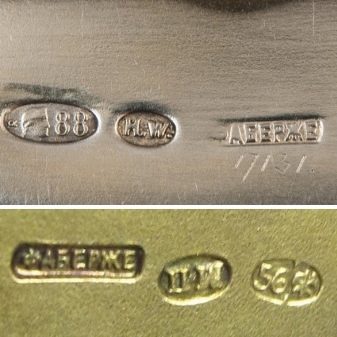
How to determine the quality of silver? For example, jewelry under labeled 600 there is a noticeable red tint - from the high content of copper. Such things are threatened by rapid oxidation (silver does not oxidize on its own, and copper is characteristic).
Alloys 800, 830 used to create souvenirs and cutlery. For jewelry, the most suitable are 875 and 925 (less often 960). The 925th test indicates that 75 grams of impurity per 1 kilogram of pure silver.
Qualitative samples contain at least 916 g of silver per 1 kg of alloy. As a standard, sets are made of it, decorated with gilding or coated with enamel. 960th test often found on silver rings, earrings, pendants or chains. The properties of this alloy are practically not inferior to pure precious metals. The significant content of silver gives things softness and plasticity. Jewelry is refined and effective, but needs careful handling and good care.
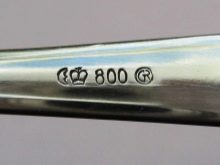
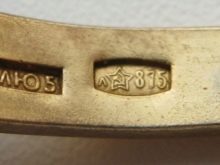

Sample 750 indicates low quality silver that is not considered a precious metal and is not always marked. Things from this alloy are quickly oxidized and blacken, acquire a characteristic shade of yellowness. The alloy is used in the field of electronics in the manufacture of circuit boards and other parts.
There are 985 and even 625 samples. The first one belongs to the precious group, but is not often used. The second is considered low-grade and is extremely rare.
Today, a lot of alloys are created, some manufacturers use their samples, for example, Sunlight TM products often come with markings. Sl 926. Silver is also divided by type, the most famous of which are presented below.
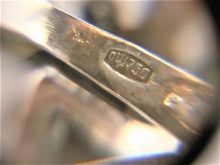
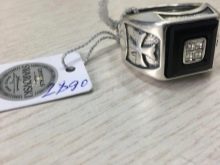
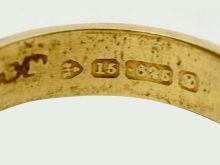
Roded
Rhodium silver is not an alloy. Rhoding is called the technique of galvanic (electrolytic) coating. The surface of the product is covered with a thin (about 0.25 μm) layer of a rare strong rhodium metal. Rhodium plating is most often used for exquisite things. Such jewelry acquires obvious advantages:
- shining shine - brighter than pure silver;
- resistance to damage and deformation;
- resistance to corrosion and discoloration.
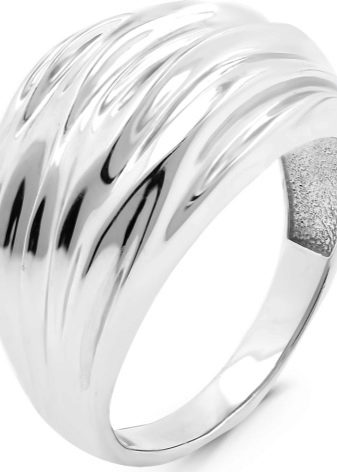
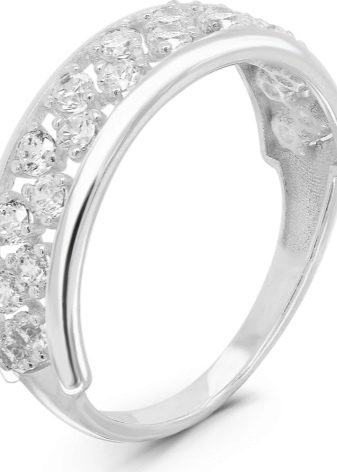
Sterling
925 sterling silver is called alloy, which is sold in all stores and from which the vast majority of jewelry is made. The name of this type of silver has its roots in the history of Britain. Such silver in the XII century by decree of King Henry II was used for stamping standard sterling.
There are several versions about the origin of the term "sterling" associated with the names of ancient coins that were calculated in Germany and Normandy.
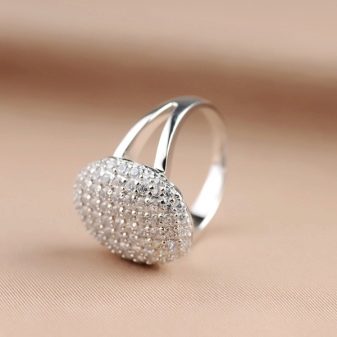

Blackened
Like wrought, blackened silver is a kind of coated metal. Blackening is the coating of silver with an oxide film to simulate oxidation. The technique originated in Russia in the XVII centurydue to which there appeared household items decorated with miniature patterns.
In modern times, with the help of such silver, antique jewelry is stylized. There are three types of ink, characterized by technology: chemical, galvanic and mechanical.
You can make blackening at home, using iodine and sulfuric ointment.

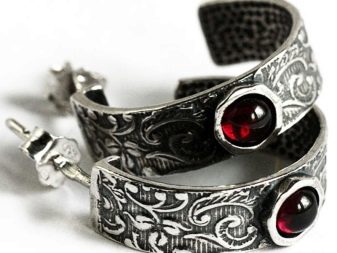
Filigree
Filigree or filigree is the name of a thin wire pattern and grains on top of the product. It can be background when the metal sheet is part of the product or openwork, if the original sheet is removed, leaving a delicate lace of silver. Filigree can be found in any museums where exhibits of noble life are presented: silver spoons, cup holders, coasters for cutlery. This elegant technique is characteristic of the times of tsarist Russia; it is valued abroad for its original Russian flavor.

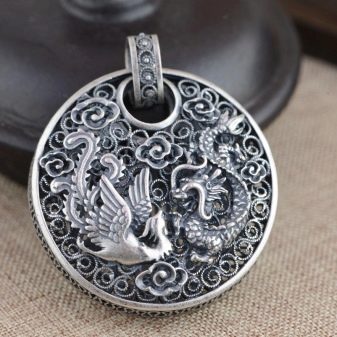
Matte
Matting is achieved by creating microscopic roughnesses on the silver surface. The process is carried out using a sandblasting machine. A rough surface cannot be polished; it rarely serves to frame stones. For gems, silver gloss is more suitable.
Matte silver looks spectacular in the neighborhood with a brilliant “classic” - in products of the type of a double ring or a chain with alternating links. The matting technique is used to create geometric and floral ornaments.
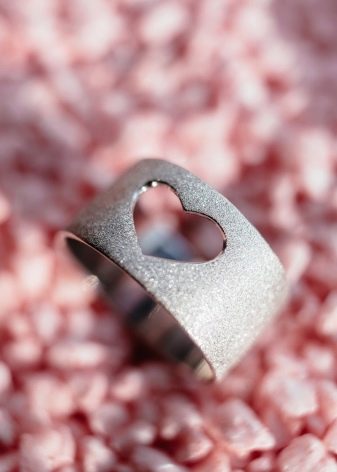
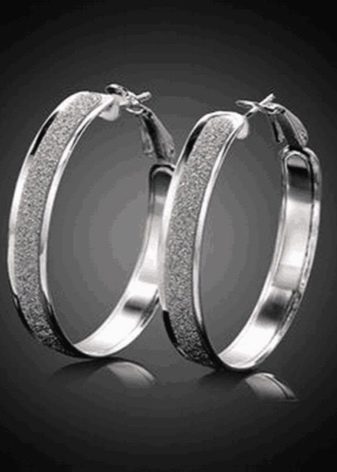
Leaf
Like gold leaf used to cover objects with a continuous layer. Thin sheets of silver leaf are used for decoration in the interiors of temples and palaces. This metal has the highest fineness. It is not suitable for covering domes, as it is not resistant to external influences, unlike gold, for example. Such a metal needs additional coating.
In the old days, egg white was used for this, and now it has been replaced with waterproof varnishes.
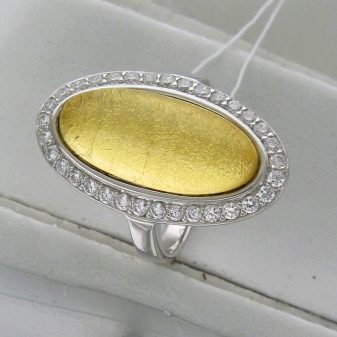
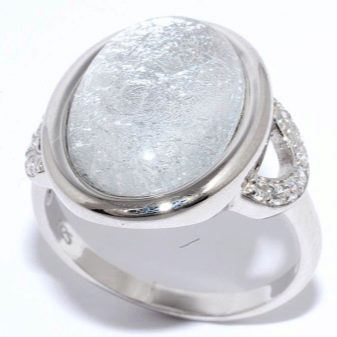
Colloid
A metal dispersion in the form of a suspension of nano- and microparticles is used in the field of cosmetology and in alternative medicine procedures.. So far there is no confirmed evidence of the effectiveness of dispersed silver, the results of experiments conducted with it are controversial. Colloidal silver is sold in solution as a dietary supplement (dietary supplement).


Dining room
Until 1927, Russia used the metric system. In the USSR, according to the standard, table silver had marking of the 875th test (84 - according to the spool system). It is still used, along with the 925th, popular in Europe until the 20th century. Any listed coverage is now available. You can turn to a jeweler if you want to treat your favorite silver spoon with rhodium to strengthen or if it has faded.
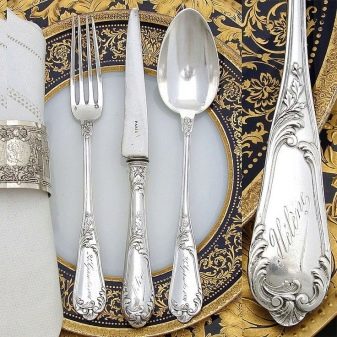

Technical
The phrase "technical silver" is ambiguous. Radio-technical scrap and metal used in electronics (for contacts), electrics (in wires), and phototechnics (for X-ray) are called technical scrap. it high inert silver, not refractory and flexible, with good electrical and thermal conductivity.

In Russia
All ligature inclusions in silver alloys have a different percentage. Someone considers 5-12% of additives to be sufficient, while other jewelers add up to 50% of ligatures to the precious metal. Jewelers in Russia have been working with silver since the 720th test. Containers for spices, drink, oils, cutlery and other kitchen items are made of an alloy of the 800th sample. Such products require good regular care. Silver of the 875th test is defined as base.
Separately worth saying about royal silver with the stigma of the 84th test. Now it actually does not occur, except in family services, museum displays, antique shops and flea markets. Silver of the 84th test was used in pre-revolutionary Russia. Then they used the measuring system in the spools.
The mass of pure metal in such a product is 0.88 g. Silver of this sample is now considered a rarity, a kind of echo of the historical past.
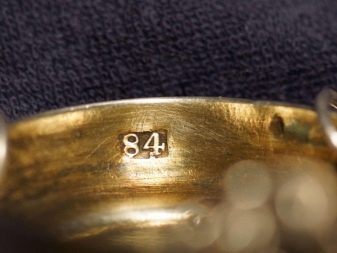
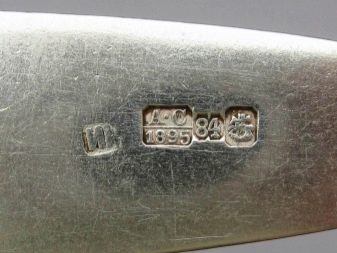
In the world
There are various samples of silver. In developing countries, the use of 600th. Consider the minimum acceptable 800th test. The rest of the world has a much richer assortment: in Europe 800th, 916th and 925th. But there are also some special tests, for example, in Egypt it is the 600th, and in China, silver is revered with almost no additives.
In the Far Eastern countries and Japan, there are silver products with the stamp of the highest standard - 1000. Locals attribute mystical power to the metal, believing that it has a connection with the moon. In addition to the samples described above, there are others in the world, but it is these options that are most popular among jewelers.

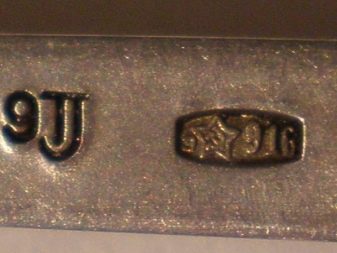
Alloys are also distinguished by systems that differ in different countries: in the USA and Canada - karat, in antiquity - spool (for example, silver of the 960th sample is defined as 92sf). There are other types of alloys:
- 750 - silver with a high copper content, prone to very rapid darkening;
- 720 and below - refers to non-precious silver, with a yellowish tint, used in industry due to the high conductivity of the electric current.

There are also such rare types of silver samples:
- 325 - Tibetan silver, previously referred to as high-quality alloys, was used to make jewelry, now there may not be precious metals in the composition, fakes are often made from alloy;
- 500 - an alloy containing a low proportion of silver; previously coins were minted from it;
- 525, 585, 625 - silver with the addition of gold, gilded silver;
- 825 - non-existent test, which is often put on products by scammers;
- 835, 800 and 900 - silver alloys, which are in use in Germany;
- 916 - A popular sample of Soviet times with a stamp-barrel, the alloy was used for dishes and ritual products.



What is the highest sample?
The highest specimen on sale is the 960th, with a small amount of copper. The most expensive alloy is 999. There are no extraneous inclusions in it. Soft material is subject to deformation, for this reason it is used only for solder in devices. It is sold in bullion.
The remaining samples are evaluated as the ligature volume increases. The smaller the number of markings, the less valuable the item is. Some circumstances need to be considered when it comes to antiques. Here it is not the test itself that matters, but the originality of the product itself and what century it refers to. The sooner the item has been manufactured, the more appreciated it is.
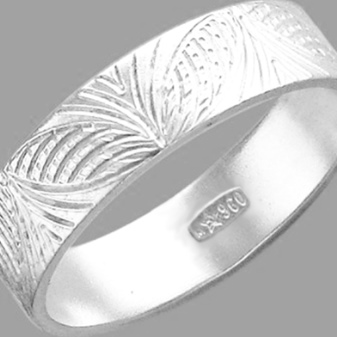
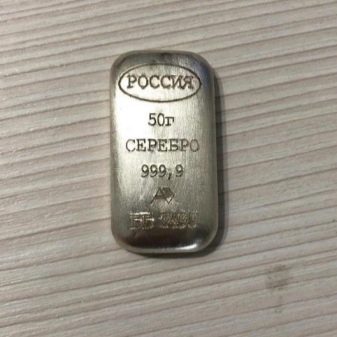
The best silver sample for jewelry is the 925th. Jewelry from this alloy is whiter than others and more brilliant. The color of the lower-quality metal is somewhat dimmer. High purity is not useful in all cases. Jewelers make locks for chains and bracelets made of metal with a breakdown lower than the bracelet itself (720 or 750). This technique extends the life of the jewelry.
It is important to have an idea of how the 925th test on silver looks, as well as other hallmarks, where to look for the test on the product and how to determine its authenticity. The presence of a mark on impurities will make it possible to understand where the item was territorially manufactured, the name of the jeweler or the name of the enterprise, as well as what breakdown the silver product is marked with.
The price of a gram of silver of the 925th test in Russia today is 45-120 rubles. The cost depends on the mass of the product, manufacturer, labeling, silver valuation rate on international exchanges, margins for retail trade. It is best to focus on the average cost in pawnshops.
Expensive silver may well be just the result of a disproportionate margin.
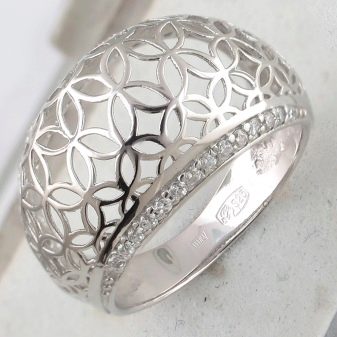

Interesting Facts
In some countries, silver is branded with an alloy test, but with some additions. In England, until 1300, the head of a British lion was depicted on the stamps, and in the future, each city had its own mark. In Russia, the mark 84 was obligatory on the mark, corresponding to the 875th test. In Germany, before the introduction of the metric system, the product of such a sample had an imprint of "14".
In some cases, it may be about the stamp of the master with an individual image or initials of the jeweler who made the thing. The presence of the mark indicates the authenticity of the product. Nevertheless, there are frequent cases when false samples are found on dishes and jewelry. Only a professional can distinguish a fake thing from a precious one.
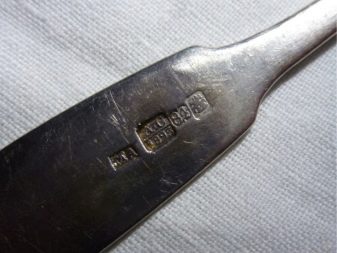
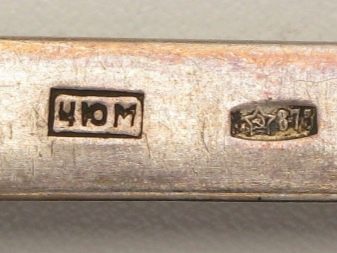
Once in antiquity, English coins - sterlings - were made of 925 sterling silver. There is a legend that sterling silver appeared in Saxony, in the area of Osterling. From here it took its name. From sterling alloy produced coins for the calculation of goods with English merchants. And only after that the pound appeared in everyday life in Britain. The ancient alloy was considered very high quality, it is still highly appreciated and used for the manufacture of jewelry and decor items.
At different times, various alloys based on silver were popular. Each of them had a special look and its own scope:
- blackened silver - used in Russia to create elegant black patterns on products;
- oxidized silver - an alloy of silver and sulfur, prone to darkening, it is an analogue of blackening, it can be with a purple undertone;
- brushed silver - a silver coating resistant to the oxidation process was used during the heyday of the Russian Empire;
- gold plated silver - spraying a thin layer of gold, popular in France of the XIX century.
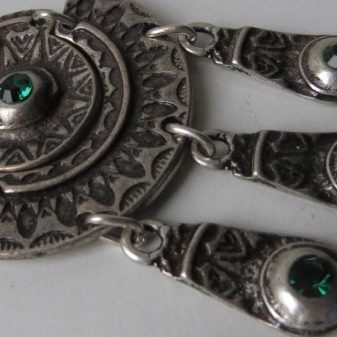
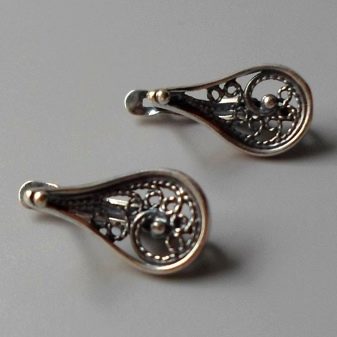
The following video will tell even more interesting things about silver samples.
